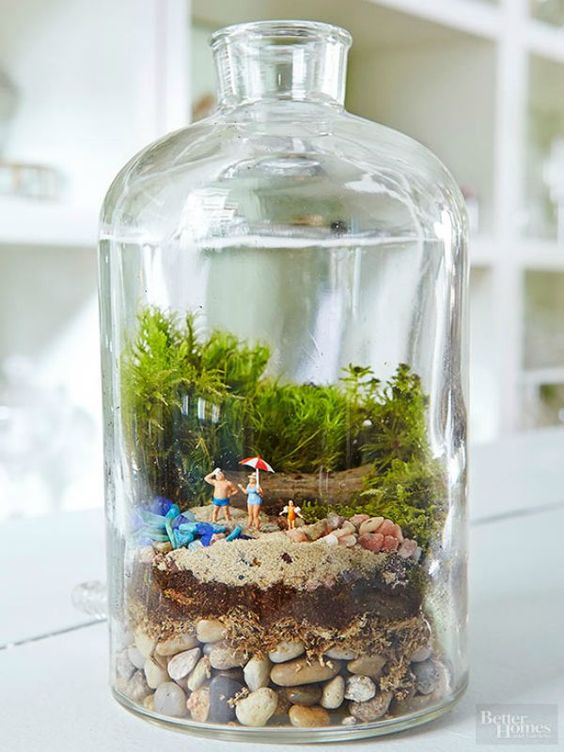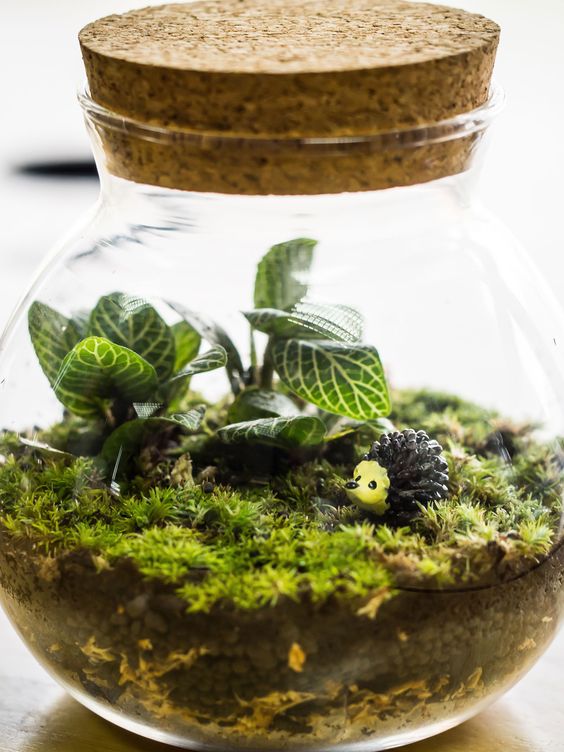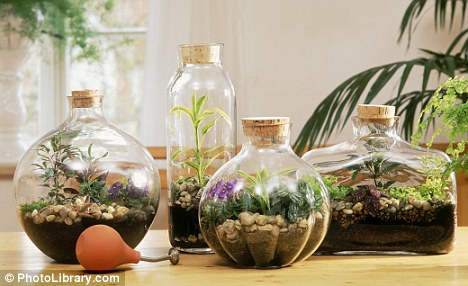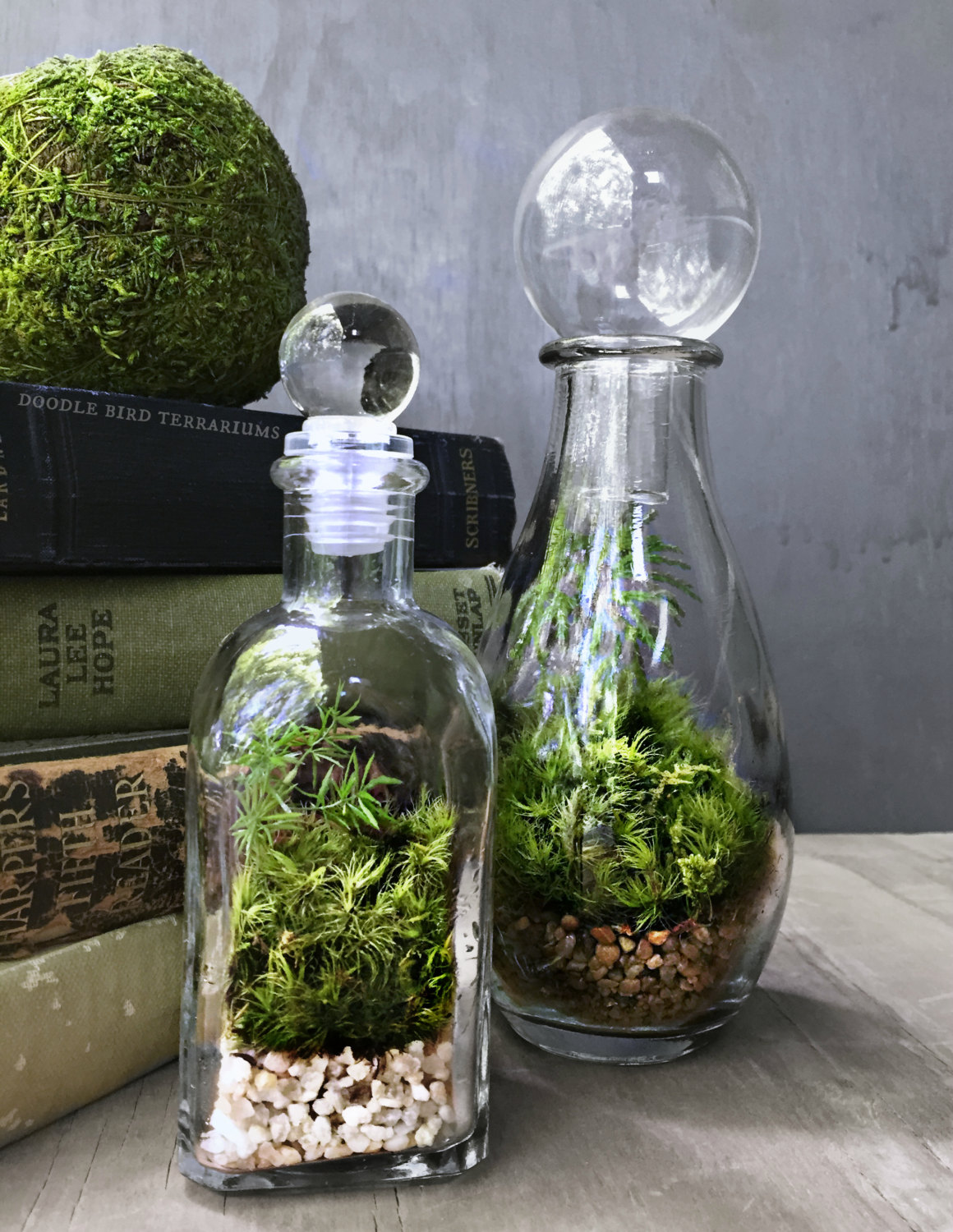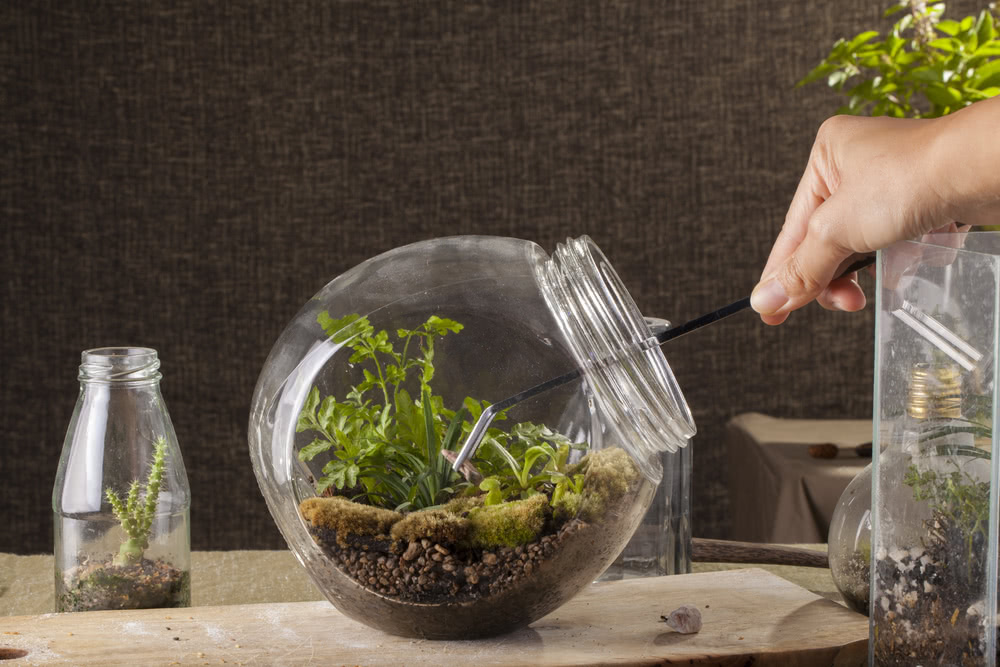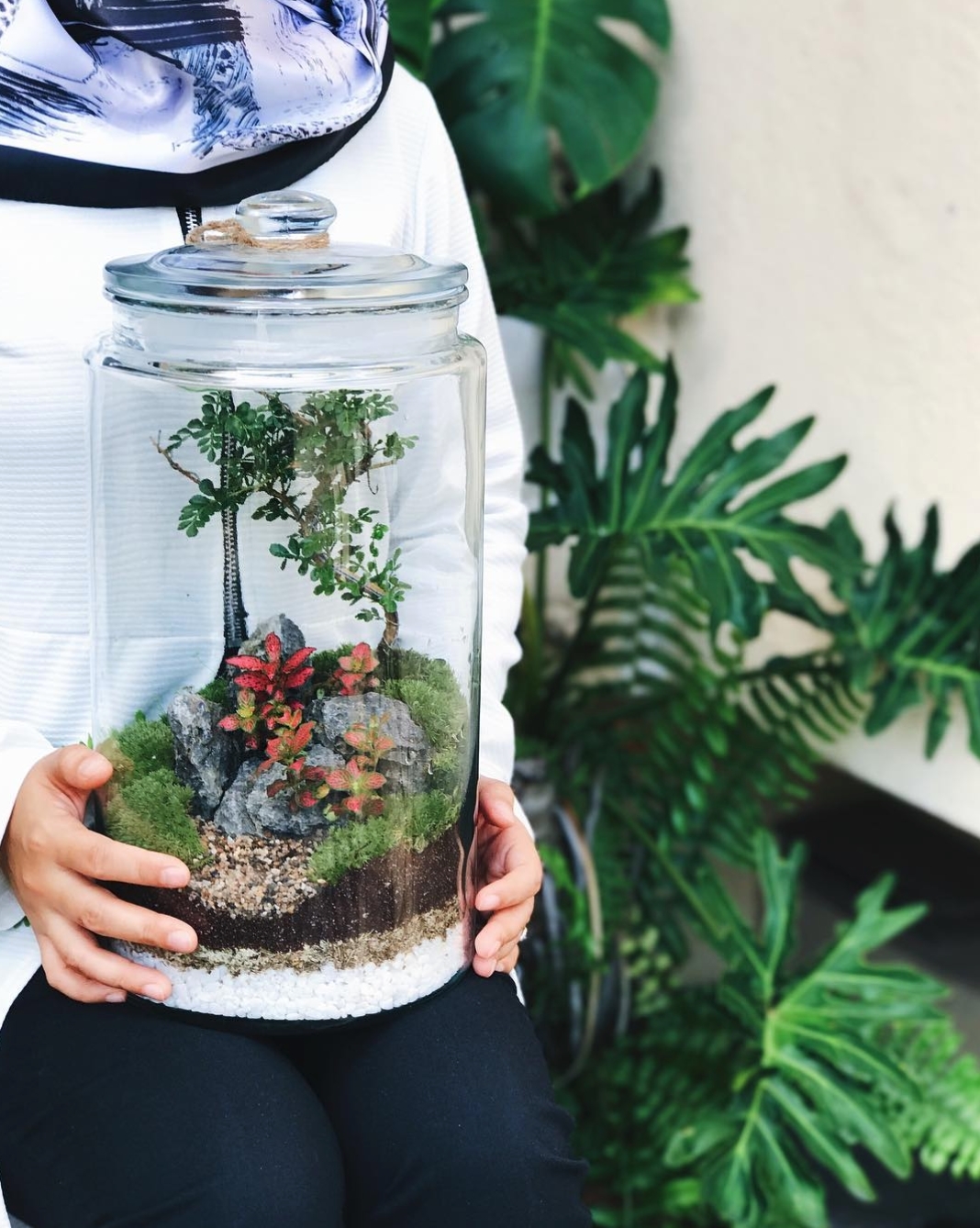Bottle gardens make a cool house décor. It’s great for those who live in tight spaces but still want some greenery in the house. Another great thing is that once the plants are inside, they require almost no maintenance at all because it has its own tiny ecosystem inside. The most it needs is just watering and removing dead foliage.
The oldest bottle garden was alleged to be planted in 1960 and remained sealed from 1972 to at least 2013! You know what this means… you can pass off the ‘burden’ to the young ones once you get bored!
What You Need
- A glass or plastic bottle
- Tweezers or chopsticks
- Activated charcoal to minimize smell of decomposition
- Peat or sphagnum moss
- Seeds
- Pebbles and sand for good drainage base
Optional
- Coffee ground helps to retain moisture, mix it with soil
- Bits of compost act as fertilizers so put it at the very bottom
- Decorative items such as pretty stones or glitter for some fun
What To Do
Step 1: Select your bottle
Choose a bottle that’s large enough for plants to grow in. It’s also good to have a bottle with a large opening so it’s easier for maintenance. Before using, make sure the bottle has been cleaned and dried well.
Step 2: Fill the bottom of the bottle with pebbles and sand
Pebbles and sand at the bottom of the bottle provide a good drainage base.
Step 3: Add a thin layer of activated charcoal and peat moss
Activated charcoal helps reduce any smell from decomposition and keeps it clean. An additional layer of peat moss on top of the charcoal will help to hold water and nutrients the plant needs to grow well. The moss also prevents the soil from settling into the drainage base.
Step 4: Sow the seeds
Tropical vegetation makes ideal bottle garden plants because it thrives in humid conditions. Suitable plants also include:
- Club moss
- Crotons
- Prayer plant
- Polka-dot plant
- Southern maidenhair fern
- Ti plants
- Spiderworts
Arrange the seeds carefully using chopsticks or tweezers. Try to space them apart to create an interesting arrangement. Avoid using plants that have different water needs or it’ll be hard to maintain.
Step 5: Seal the garden and watch it grow
After adding water through spraying, cover the bottle with a lid or cork and place it in an area with enough sunlight. Another option is to puncture a hole in the lid to let air and moisture in but it’s not entirely needed.
TIP: Only water when there is no condensation on the glass. It’s better to underwater than overwater to prevent the growth of fungus and mold.
Check out the cute bottle gardens made by others for some ideas and inspiration:
